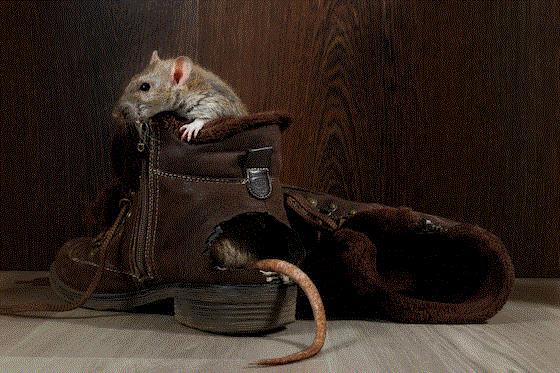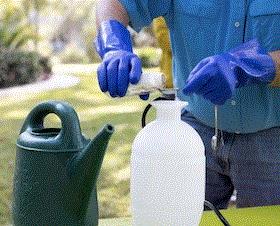Hey Paul, What’s this?
I previously mentioned the idea of a new feature for the newsletter where subscribers could ask questions, request topics they'd like to see covered in the newsletter and even submit images for diagnostic challenges. Here’s the first reader’s choice topic:
I received this image from a grower in the Midwest and was asked if I knew what was going on with their hosta.
Having been in the perennial industry for over 20 years, I can honestly admit that I’ve seen and experienced this on hostas several times. From my experience, these leaf spots are caused by fungal pathogens. I’m not a pathologist and the plants in the image above were not sent to a diagnostic clinic, but these are most likely caused by the fungal pathogen Colletotrichum, an Anthracnose disease.
Colletotrichum is the most common foliar leaf spot disease hostas are prone to. It causes large irregularly shaped spots with darker borders. The centers of these spots often fall out and the leaves appear tattered. Colletotrichum is most prevalent with warm temperatures and moist conditions.
Cercospora is another leaf spot disease that hostas occasionally experience. They usually appear as tan to reddish leaf spots with darker rust colored borders distributed randomly across the leaf surfaces. Similar to Colletotrichum, Cercospora also occurs during warm, wet conditions.
Several fungicides are effective at controlling both Cercospora and Colletotrichum leaf spot diseases. My top three favorite products for controlling these diseases are Aveylo (mefentrifluconazole – FRAC Group 3), Orkestra (pyraclostrobin + fluxapyroxad – FRAC Groups 7 & 11) and Palladium (Cyprodinil + Fludioxonil – FRAC groups 9 & 12). Notice these products each have different modes of action and make great rotational partners.
Remember that fungicides applied at this stage in the infection can stop the disease from progressing and spreading, but will NOT remove the existing leaf spots. It's best to apply fungicides preventatively before leaf spots develop or upon early detection.
From my expereince, when I've observed leaf spots in the previous growing season, they almost always reoccur the following year. Therefore, apply fungicides preventatively in the spring when leaf spots were present the previous year.

La Guía del IMF ya Está Disponible
In early September I passed along information on GrowerTalks new 2025 Insecticide, Miticide & Fungicide Guide (a special thanks goes out to our friends at BASF who sponsor this awesome resource). The IMF guide is now available in Spanish.
The newest edition contains tons of content, including chemical class charts, an extensive insecticide/miticide table and numerous articles from several of the industry’s top experts.
Here are links to both versions.
Be sure to pass these along to your entire growing staff so they can utilize this invaluable information.
The Rodents Are Coming! The Rodents Are Coming!
As winter approaches and we begin to overwinter perennials, we must recognize that rodents (mice, voles etc.) are synonymous with overwintering. While overwintering perennials, the rodents have everything they need (shelter and food) to survive and thrive the winter months.
It’s amazing how much damage rodents can cause to perennials over the course of the winter. In most instances, their presence goes undetected, but once they're discovered, growers often observe significant damage to the containers, roots, crowns, rhizomes and stems of their perennial crops.
Rodent damage to Phlox subulata overwintered under protective blankets.
When overwintering perennials, especially when using protective coverings, it’s essential to have a rodent management plan in place to lessen or alleviate the injury and/or losses rodents can cause. Let’s look at the options available to growers.
Repellents for Rodents

One option available to growers is to apply repellents to the crops and the surrounding areas to repel rodents. There are various products available, but they generally work by giving off offensive odors and/or having repulsive flavors, both of which discourages feeding on the perennials being overwintered.
Examples of Several Commercially Available Rodent Repellents
|
I Must Garden Mole & Vole Repellant |
Caster Oil, Peppermint Oil and Cedar Oil |
|
Pro-Pell Rodent Repellent |
Soy Bean Oil, Peppermint Oil, Rosemary Oil, Citronella Oil, Putrescent Whole Egg Solids |
|
Rat Magic Rodent Repellent |
Cedar Oil, Castor Oil, Clove Oil, Peppermint Oil |
|
Tomcat Rodent Repellent |
Sodium Lauryl Sulfate, Peppermint Oil, Cinnamon Oil and Garlic Oil |
Repellants generally have little residual activity and would need to be reapplied with some frequency. This can be challenging in scenarios where protective blankets are also being used. Products containing capsaicin or thiram are also often used as repellants.

Rodent Baits
Repellents can be somewhat successful at discouraging rodents, but it’s often necessary to use some baits to provide a high level of control. There are numerous single dose and anti-coagulant baits available.
Most growers use anti-coagulant baits containing the active ingredients chlorophacinone or diphacinone, and difethialone to control rodents. Anti-coagulants are slow acting, often taking five to 15 days and will require multiple feedings for them to be effective. Although these products take time to see the results, they're generally safer for pets and other types of wildlife that don't need to be controlled. A potential disadvantage of baits is several growers observe what's referred to as "bait shyness" where the rodents avoid the baits or only consume non-lethal doses of it.
As the description implies, single-dose baits are very toxic and can kill mice and voles with a single feeding. They often contain bromadiolone, brodifacoum, cholecalciferol and zinc phosphide. These baits are highly effective and often kill rodents within 48 hours of consumption. Single-dose baits effectively kill rodents, but they can also be lethal to non-targeted animals such as pets. Growers should take extreme measures to use these baits safely.
To increase safety to no-target pests, many growers use various types of bait stations. Bait stations also keep the baits dry and longer lasting.
With either type of bait, it's beneficial to begin baiting about a month before the beginning of the overwintering period. It's recommended to place all baits in containers rather than placing them in heaps, piles or broadcasting them around the production site. Baits should be kept dry, as moisture reduces their effectiveness. Check the baits on occasion throughout the winter to determine if additional bait needs to be applied to sufficiently control of rodents through the rest of the overwintering period.

Practical Disease Management
If you’re like most growers, managing diseases is one of the most challenging aspects of producing perennials and other plants. Here’s your chance to sharpen up your disease knowledge. The University of Florida IFAS Extension just added the “Practical Disease Management” course to its award-winning Greenhouse Training Online courses. It’s one of 11 four-week certificate courses currently offered.
|
NEW for 2024
Practical Disease Management
When: November 11 to December 13, 2024
Go here for:
|
 |
Lesson Topics
-
Introduction to disease management strategies
-
Bacterial diseases: Causes and environmental management
-
Viral diseases: Causes and environmental management
-
Fungal diseases: Causes and environmental management
-
Fungicide modes of action, calculations, application, timing and resistance
-
Top 10 diseases and their chemical management
-
Resources for diseases management and developing a targeted management plan
This course and other offerings are considered intermediate level and are intended for individuals with some experience and training. They're designed for greenhouse, nursery and hydroponics employees in the U.S. and internationally who are in production, technical or sales roles.
Enroll now, as this class begins November 11, 2024.




Thanks for reading this edition of Perennial Pulse. My email is paul@opelgrowers.com if you have any comments, article suggestions or if you'd just like to say hello.
Best regards,

Paul Pilon
Editor-at-Large—Perennial Pulse
Director of Growing—Opel Growers
This email was received by you and 34,419 other fine subscribers!
If you're interested in advertising in Perennial Pulse, contact Kim Brown ASAP and she'll hook you up.